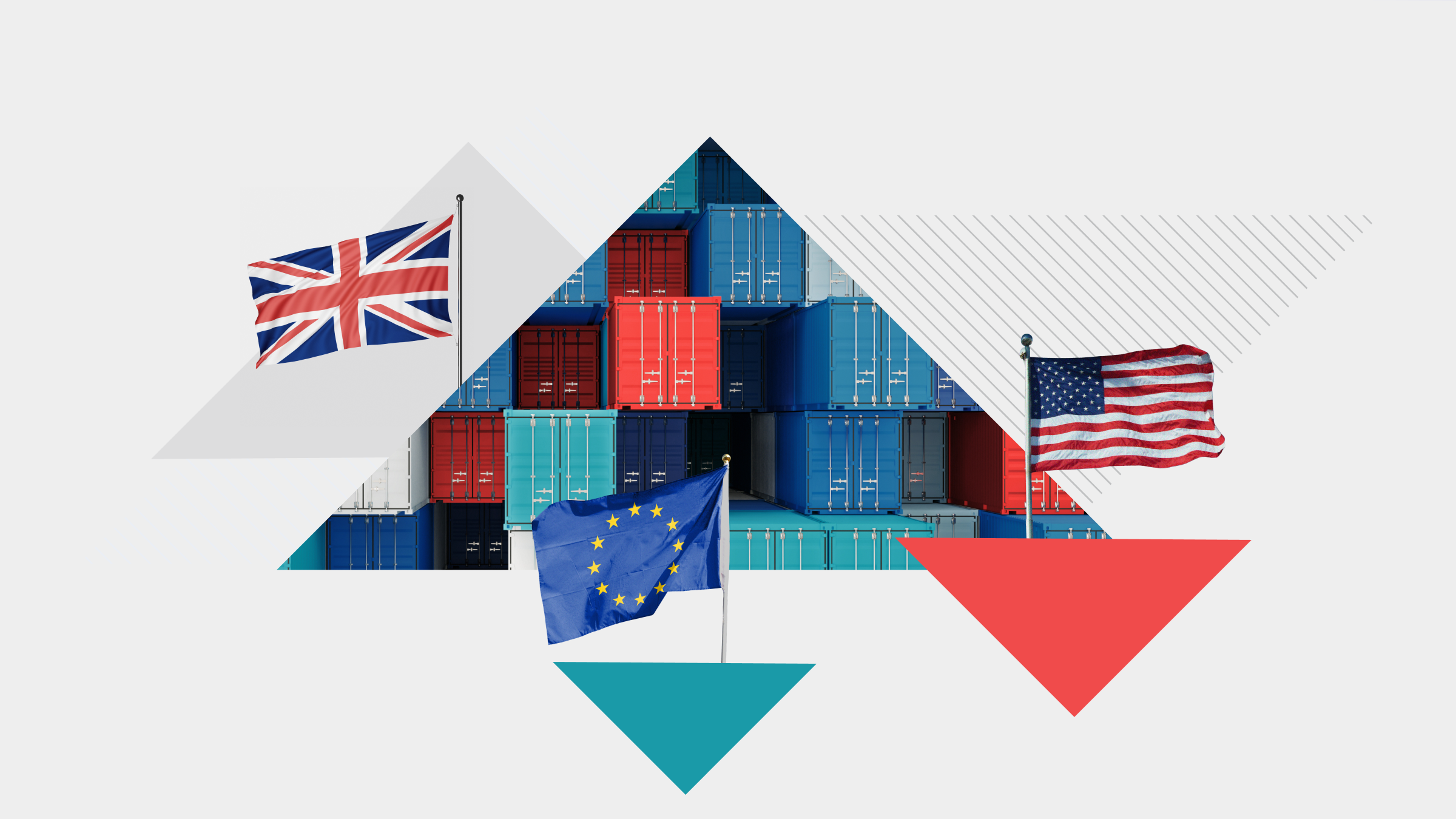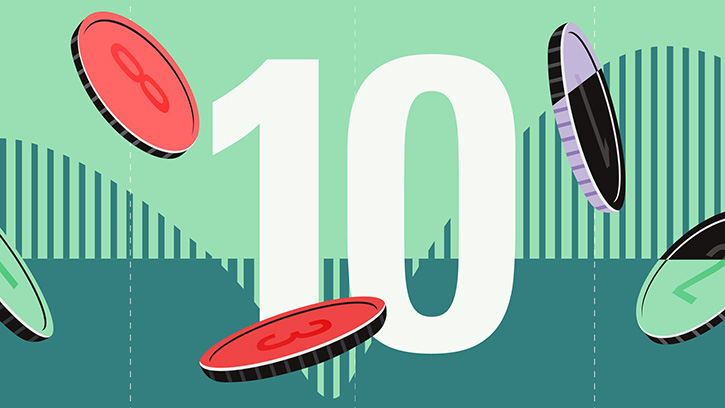Rolle im Portfolio
The fund offers low-cost exposure to the 50 largest stocks in the eurozone. The very large size of the companies in the index (their average market capitalisation is greater than EUR 50 billion) means that with only 50 components, it captures 60% of the total market value of all eurozone-listed companies. This makes the Euro Stoxx 50 a widely followed benchmark to gauge investor sentiment on eurozone equities.
Assessed in the context of the Morningstar Eurozone Large-Cap Equity category, however, the Euro Stoxx 50 stands as a narrow investment proposition that does not represent the available opportunity set. The category includes active and passive funds that are less concentrated in giant caps and better diversified.
Because of its pure mega-cap focus --and lack of tailwind generally provided by "smaller" caps at times of strong economic growth-- the fund is unlikely to outperform its surviving category peers over a full market cycle. It has landed in the third quartile of the category with an above-average level of volatility during the trailing three-, five- and 10-year periods. The fund has held better in times of market downturns and uncertainty when investors tend to flee to the safety of blue chips.
All that said, there is no shortage of ETFs offering exposure to the popular Euro Stoxx 50, many of which have seen their fees slashed in recent years. The fully replicated UBS (LU) Euro Stoxx 50 ETF levies a mid-range ongoing charge of 0.15%. Most eurozone equity passive funds linked to net return indices exhibit positive tracking difference (fund return less index return) because of tax optimisation practices. This fund has outperformed the Euro Stoxx 50 Net Return Index by an annualised 0.56% over the trailing three-year period. This is slightly above average compared with directly competing ETFs.
French and German companies make up more than two thirds of the Euro Stoxx 50. The vast majority of holdings do a lot of business in Europe, but they tend to have global operations. Sector-wise, the fund has a stronger bias towards financials than the average fund in the category.
All in all, because of its narrow mega-cap mandate, the UBS (LU) Euro Stoxx 50 ETF represents a less-than-ideal option for investors seeking long-term exposure to eurozone large-caps. Additionally, there are cheaper and better performing Euro Stoxx 50 ETFs on offer.
Fundamentale Analyse
Investors in eurozone equities have a lot to thank the European Central Bank, or ECB, for since the 2011-12 sovereign debt crisis which threatened to break up the Monetary Union. ECB president Mario Draghi’s famous pledge in 2012 to “do whatever it takes” to preserve the euro, followed by the bank’s massive quantitative easing programme in 2015, has helped restore investor confidence in the region and support equity valuations. The ECB has since extended its bond purchases into 2017 and stands ready to take additional measures if the economic outlook for the region deteriorates.
The recovery in the eurozone from the 2008 financial crisis has been slower than in other parts of the world, most notably the U.S. and the U.K.. And this has been amply reflected in the performance of the stock market, with the Euro Stoxx 50 returning about 30% over the past five years (to March 2016), compared with 70% for the S&P 500.
The loss of competitiveness that many eurozone countries have suffered and tight fiscal policies have taken their toll. After almost two years of recession, the region expanded by 0.9% in 2014 and 1.5% in 2015 helped by lower energy prices and a weaker euro. But the recovery-–mainly driven by consumer spending--remains fragile and economists predict that precrisis growth rates of 2% annually won’t be seen again unless national governments accelerate the implementation of structural reforms.
Several countries have adopted labour market reforms but results remain uneven. While unemployment rates have fallen in Spain and Italy, the one in France continues to be stubbornly high.
Meanwhile, news from emerging markets, especially China, continues to pose downside risks to eurozone equity valuations. An abrupt slowdown in the Chinese economy could derail the long-awaited recovery in corporate profits in Europe.
Indexkonstruktion
The EURO STOXX 50 Index includes 50 large-cap companies from 12 developed countries in the eurozone. To be eligible for inclusion a company must be headquartered in a country of the European Economic and Monetary Union. In order to construct the index, STOXX identifies stocks that represent the largest 60% of each Super Sector (there are 19) by free-float market cap. It ranks the stocks on the resulting list by free-float market cap and targets the largest 50 for inclusion in the index. Each component is capped at a maximum of 10% of the index’s overall value. In order to reduce unnecessary turnover, the largest 40 stocks are included in the index. The remaining 10 stocks are chosen from stocks with a rank between 41 and 60. This adjustment, together with market-cap weighting, has kept the index’s turnover low. Its turnover was in the single digits in each of the past five years. The financial sector is the biggest sector represented, comprising 24%-28% of the index's value, followed by industrials (11%-14%), and consumer staples (11%-13%). French and German companies account for about 65%-70% of the index. Spanish and Italian companies represent another 19%-23% and the remainder is spread among another eight countries. The index is fairly well-balanced from a single stock perspective. The top three components of the EURO STOXX 50 are Total, Sanofi, and Bayer, with a 4%-6% weighting each.
Fondskonstruktion
This fund uses full replication to track the performance of the EURO STOXX Net Return index. The fund invests in all the constituents of the index with the same weightings stipulated by the index. Routine cash stock dividends are re-invested according to index rules using an ‘overdraft’ facility available from the custodian, State Street Bank. This practice helps reduce tracking error. The fund engages in securities lending to help improve tracking performance. Gross lending revenues are split 60/40 between the fund and lending agent State Street Bank, respectively, while the latter covers all the operational costs. In the twelve months to this writing, the fund lent out 9.9% of its assets on average and a maximum of 23.5% at any point in time. The activity generated 0.05% of net revenue for the fund. Although this activity serves to enhance returns, it also introduces counterparty risk. To protect the fund, borrowers are requested to post collateral equivalent to 105% of the loan value. Counterparty risk is monitored on a daily basis by the lending agent. As a general rule, the amount of securities that can be lent by the ETF at any point in time is capped at 50% of its net asset value (NAV). To further mitigate counterparty risk, State Street also provides borrower default indemnification in the event a borrower is unable to return the securities.
Gebühren
At 0.15%, this fund's ongoing charge is in the middle of the range for ETFs tracking the Euro Stoxx 50 index. Today there are rival ETFs charging fees as low as 0.05%. That said, one should look beyond fees and examine the total holding cost per year, as measured by the tracking difference (fund return less index return). Most, if not all, Euro Stoxx 50 ETFs exhibit positive tracking differences (meaning they outperform the index) because of differences in withholding tax treatment between the funds' and the index's methodology (the funds enjoy a better withholding tax rate on dividend than the Euro Stoxx 50 Net Return index). The UBS (LU) Euro Stoxx 50 ETF has outperformed its benchmark over the trailing three-year period by an annualised 0.56%. Additionally, an ETF investor will typically have to pay trading costs, including bid-offer spreads and brokerage fees, when buy and sell orders are placed for ETF shares.
Alternativen
The EURO STOXX 50 is the most widely tracked index to gain exposure to eurozone equities, so there are plenty of alternatives available. The iShares Core Euro Stoxx 50 and the db x-trackers Euro Stoxx 50 (DR) ETF are among the cheapest and best performing.
Investors looking for a more comprehensive exposure to eurozone equities, including large and mid-cap stocks, can consider ETFs tracking the MSCI EMU. ETFs tracking the Euro Stoxx will additionally provide some small-cap exposure.
Other options, albeit less directly comparable, include ETFs that track the MSCI Europe and the STOXX Europe 600. These indexes provide broader exposure to European equities, including equities from non-EMU countries like the U.K. and Switzerland. And again here, there is no shortage of options.
Die in diesem Artikel enthaltenen Informationen dienen ausschließlich zu Bildungs- und Informationszwecken. Sie sind weder als Aufforderung noch als Anreiz zum Kauf oder Verkauf eines Wertpapiers oder Finanzinstruments zu verstehen. Die in diesem Artikel enthaltenen Informationen sollten nicht als alleinige Quelle für Anlageentscheidungen verwendet werden.

















